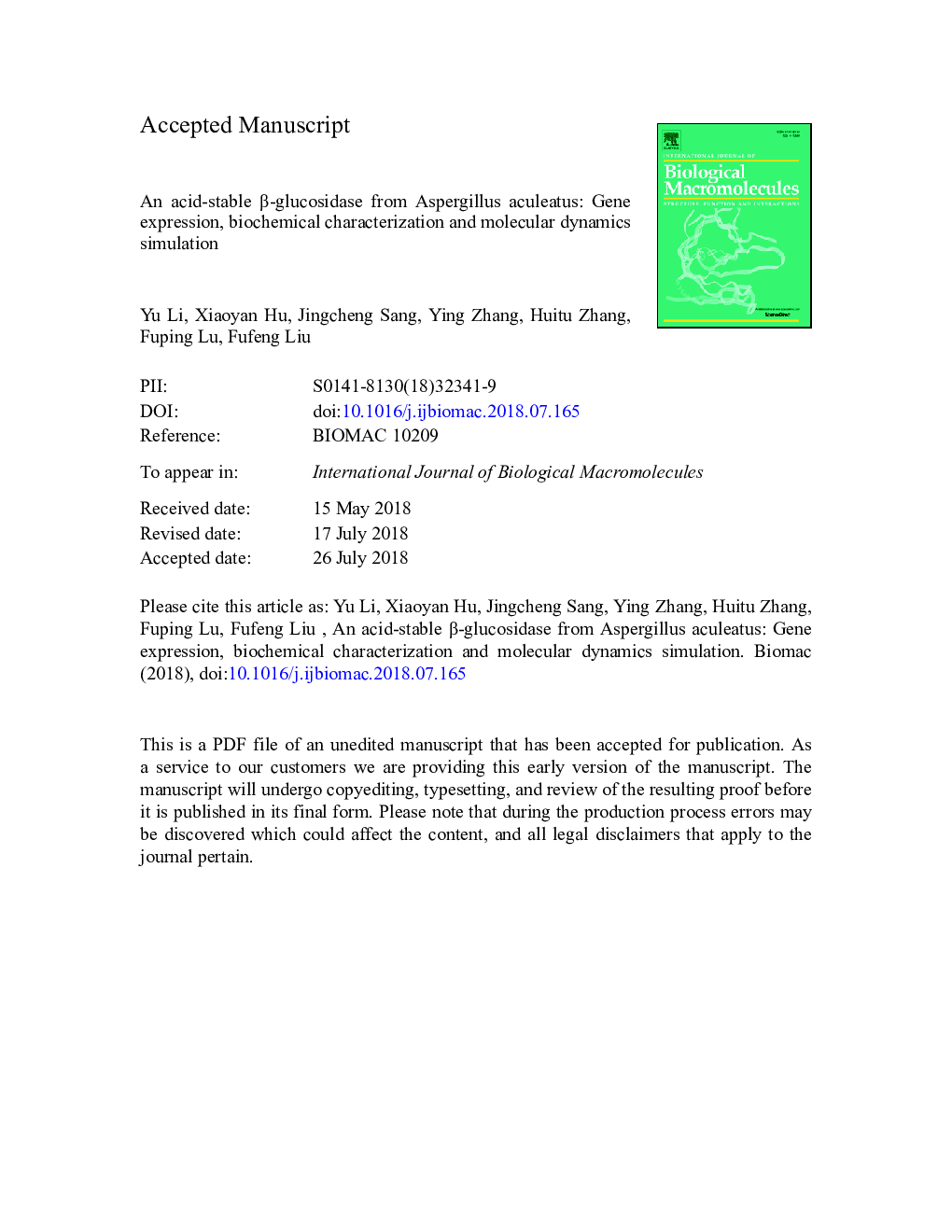| Article ID | Journal | Published Year | Pages | File Type |
|---|---|---|---|---|
| 8326750 | International Journal of Biological Macromolecules | 2018 | 41 Pages |
Abstract
β-Glucosidases hydrolyze terminal, non-reducing β-d-glucosyl residues and thereby release β-d-glucose. They have applications in the production of biofuels, beverages and pharmaceuticals. In this study, a β-glucosidase derived from Aspergillus aculeatus (BGLA) was expressed, characterized, and the molecular mechanism of its acid denaturation was comprehensively probed. BGLA exhibited maximal activity at pHâ¯5.0-6.0. Its optimal temperature was 70â¯Â°C. Its enzyme activity was enhanced by Mg2+, Ca2+ and Ba2+, while Cu2+, Mn2+, Zn2+, Fe2+ and Fe3+ had a negative effect. BGLA showed activity on a broad range of substrates including salicin, cellobiose, arbutin, geniposide and polydatin. Finally, the acid-denaturation mechanism of BGLA was probed using molecular dynamics (MD) simulations. The results of simulation at pHâ¯2.0 imply that the contact number, solvent accessible surface area and number of hydrogen bonds in BGLA decreased greatly. Moreover, the distance between the residues Asp280 and Glu509 that are part of the active site increased, which eventually destroyed the enzyme's catalytic activity. These MD results explain the molecular mechanism of acid denaturation of BGLA, which will greatly benefit the rational design of more acid-stable β-glucosidase variants in the future.
Related Topics
Life Sciences
Biochemistry, Genetics and Molecular Biology
Biochemistry
Authors
Yu Li, Xiaoyan Hu, Jingcheng Sang, Ying Zhang, Huitu Zhang, Fuping Lu, Fufeng Liu,
